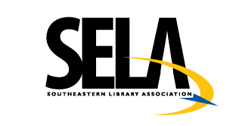Abstract
Advancements in technology have impacted how people gather and obtain new information. This phe-nomenon is especially apparent among younger generations where there has been an increase in the number of students who are visual learners. To continue to best serve these students, librarians need to begin to adapt library instructional material, such as research guides, to also present information using visual multimedia resources. While adapting research guides to increasingly visual learners, the oppor-tunity exists to ensure that research guides follow a user-centered design. In the process of updating these guides, librarians can also provide some assistance with web accessibility by meeting several crite-ria from the Web Content Accessibility Guidelines 2.1. This article highlights criteria from the Perceiva-ble, Understandability, and Operable sections that can be met by non-web designers. The foundation of this process is the development of a content strategy that guides the planning and adapting of research guides. This article presents some of the best practices that can be used to guide librarians as they proac-tively adapt their research guides to current learners learning styles, while still meeting web accessibility expectations.
Publication Date
Summer 8-11-2023
Included in
Information Literacy Commons, Scholarly Communication Commons, Scholarly Publishing Commons
